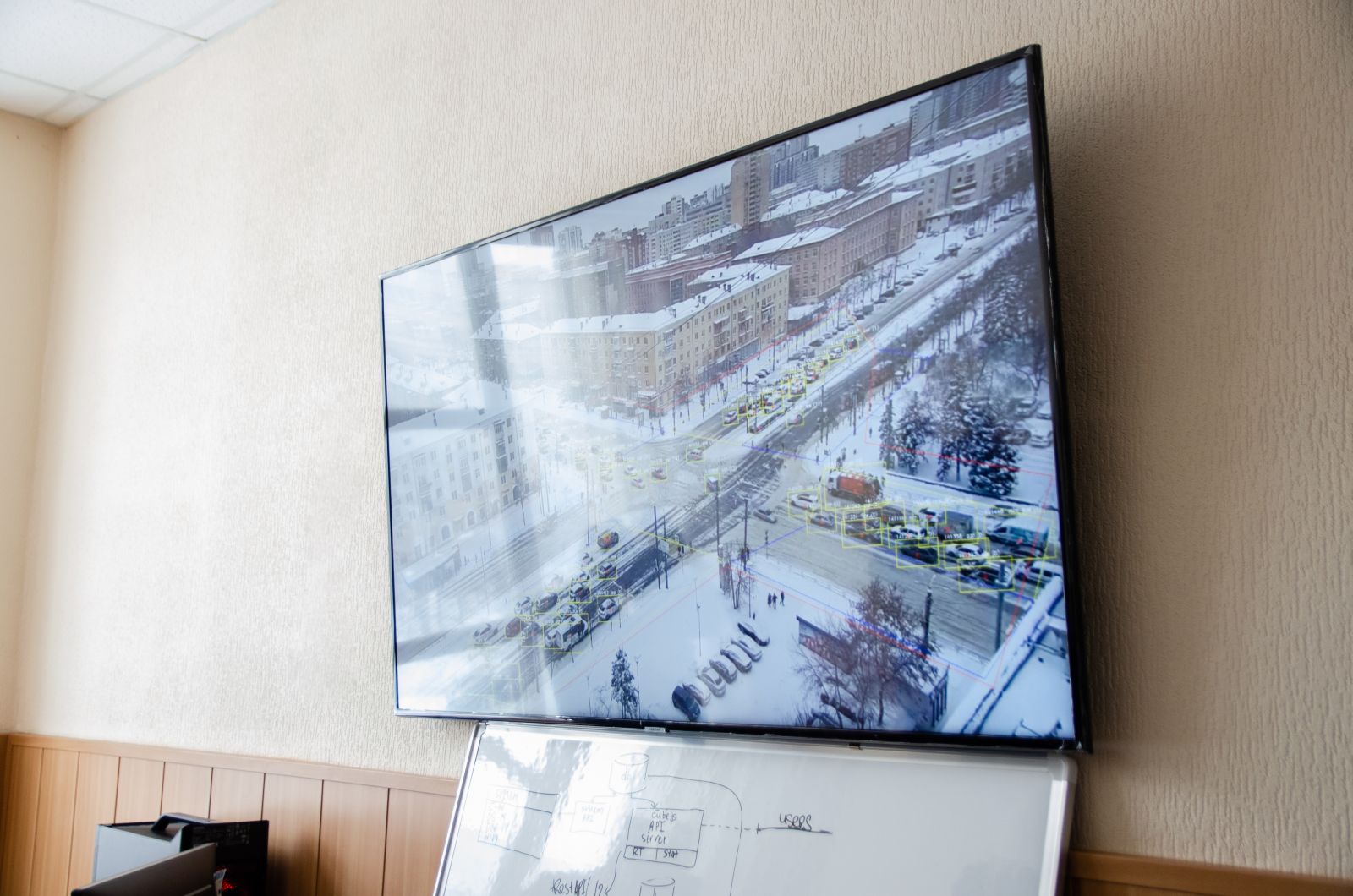Researchers from SUSU are creating an intelligent system to regulate traffic flows in cities. This system will help reduce traffic idling time at intersections and automobile emissions. The research was completed as part of the Priority 2030 strategic project Ecology of Post-industrial Agglomerations. The goal of the project is to improve the environment by reducing greenhouse gases and hazardous pollutants. The scientific article was published in a highly ranked journal (Q1).
Vladimir Shepelev, Candidate of Sciences (Engineering) and a leading researcher of the Department of Automobile Transport, and Sergey Alyukov, Doctor of Sciences (Engineering), conducted a study which aims to tackle the problem of vehicles stopping at intersections.
One of the problems of cities is that vehicles must stop at intersections while waiting for a traffic signal and other vehicles standing ahead of them at the traffic signal. Stop-and-start traffic leads to an increased negative impact on the urban environment and ecology. The use of vehicle-to-vehicle communication will make traffic more energy-efficient and environmentally-friendly.
The researchers suggested that increasing traffic density could make vehicle speeds more stable and reduce the need for lane changes. This would increase the capacity of intersections and increase traffic safety.
"Modern technology can be used to improve the quality of traffic: reduce overall congestion; improve the safety of drivers and pedestrians; and reduce the impact of cars on the environment. We have described a predictive model that allows us to calculate the rate of increase in the probability of passing through regulated intersections without stopping. The paper proposes a conceptual model for implementing cooperative intelligent transportation systems, as well as transferring information to the Digital Road Model and to the on-board system to inform the driver," says Sergey Alyukov.
The concept of sustainable transportation reduces traffic, saves costs and travel time within the city, reduces carbon emissions, and reduces fuel consumption.
The usefulness of existing solutions and technologies of traffic organization, such as the green wave, smart traffic lights, and expanding lanes has nearly been expended. One of the solutions to improve the efficiency of the road network is active interaction between infrastructure and vehicles. Active development of IT solutions for the recognition of vehicles by category and counting the volume and speed of traffic from street surveillance cameras gives ample opportunity to improve the efficiency of traffic management.
"Our research in this area is at the stage of experimental testing of the technology; we focused on several intersections in Chelyabinsk and Tyumen with high traffic. The YOLOv3 neural network and the finalized SORT object tracker were used to solve the problem. A heuristic algorithm was applied to classify and measure the speed of vehicles. To train the detector algorithm we processed 9,500 video frames with classification and tracking of more than 450,000 objects presented in different conditions," says Vladimir Shepelev.
Experiments have shown that the proposed system can predict the transit time of a queue of vehicles at regulated intersections and reduce the forced number of stops by up to 14% by optimizing the vehicle speed.
Using the methods of fuzzy mathematics, a model for determining the optimal speed of a vehicle approaching an intersection has been developed. This model shows a high level of accuracy, because it takes into account the percentage of large vehicles in front of the intersection. A large number of bulky vehicles will lead to delays in clearing the intersection, so vehicle speed should be reduced when approaching the intersection. This is reflected in the predicted values of the optimal speed based on fuzzy modelling methods.
Travelling at the optimal speed recommended by connected assistant will increase the density of the traffic flow. Even if a small number of cars are equipped with the researchers’ solutions, they will still serve as flow speed regulators and will lead other vehicles.
South Ural State University is a university of transformations, where innovative research is conducted in most of the priority fields of science and technology development. In accordance with the strategy of scientific and technological development of the Russian Federation, the university is focused on the development of big scientific interdisciplinary projects in the field of digital industry, materials science, and ecology. In 2021 SUSU became the winner in the competition under the Priority 2030 program. The university acts as a regional project office of the World-class Ural Interregional Research and Education Centre (UIREC), which is aimed at solving the tasks of the Science and Universities National Project.
Read our news:





